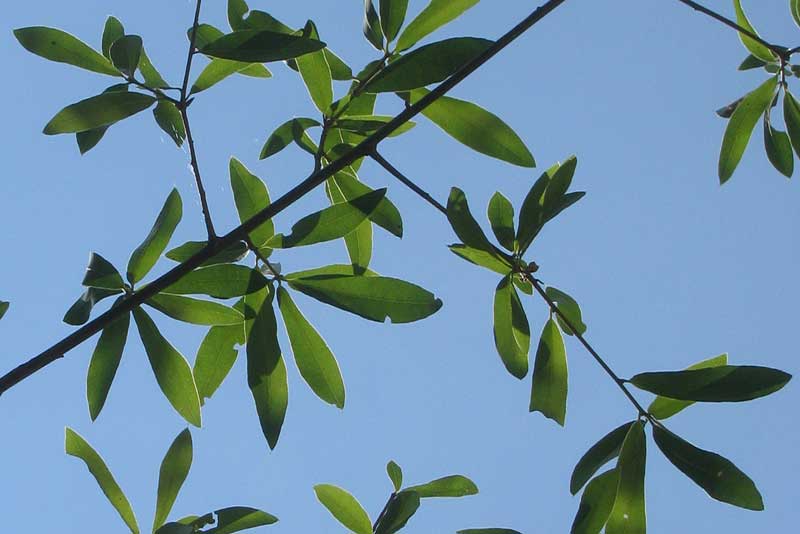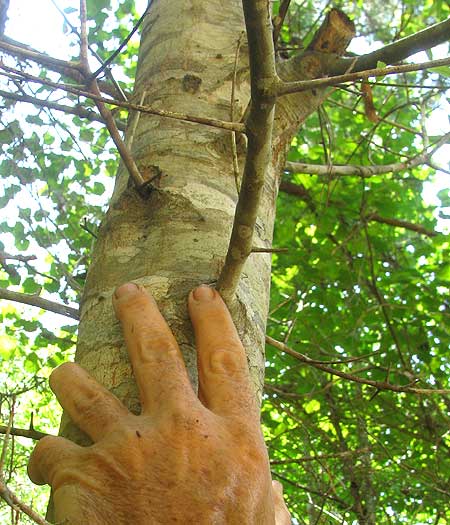Excerpts from Jim Conrad's
Naturalist Newsletter

from the May 27, 2012 Newsletter issued from the woods of the Loess Hill Region a few miles east of Natchez, Mississippi, USA
AN OAK THAT COMES AND GOES
For years I've wondered about the identity of the oak whose small, narrow leaves and stiff, slender, angularly jutting stems are shown above. My old Trees of North America indicates that in this area we have two species with such leaves: Willow Oaks, Quercus phellos, and; Laurel Oaks, Quercus laurifolia. But both of those species favor bottomland soils and these mystery trees definitely like loess-mantled ridge crests and bluffs. Also, the trunks of my upland trees are blotched with pale patches, and small twigs branch off the main trunk in a way that just didn't "feel right." You can how our ridge trees do it below:

So, biking along ridge crests through the hills near here in Homochitto National Forest this week I decided to try one last time to settle in my mind these trees' identity. First I needed last season's acorns, which were found beneath a tree as shown below:

By comparing with the width of my fingers, you can see that those are very small acorns. They look like Laurel Oak acorns. After a lot of internetting, here's what I've come up with:
Based mostly on pictures on the Internet others have taken of the growth form and the pale, blotchy bark of young trees, and the fact that these are upland trees, not bottomland, I'm fairly sure we have QUERCUS HEMISPHAERICA, which doesn't have a commonly accepted English name. Most authors needing an English name appear to call it the Laurel Oak, but that name already is used by Quercus laurifolia. In the past, Quercus hemisphaerica was regarded as a variety of Laurel Oak, or a form not worthy of variety status. Quercus hemisphaerica isn't even mentioned in my old Trees of North America.
However, the online Flora of North America recognizes Quercus hemisphaerica, saying that it occupies "moderately dry sandy soils, scrub sandhills, stream banks, occasionally on hillsides and ravines." It is distributed along the Coastal Plain from southeastern Virginia to southern Texas.
It's reported to hybridize with several other species. Maybe that explains why as I biked through forests in which the main trees were Water Oaks, Quercus nigra, our oaks were like ghosts, sometimes suggesting Water Oaks with extra small and slender leaves, sometimes looking like our oak but with strong hints of Water Oak, and only rarely exhibiting the species' full-blown features as shown by the tree in our photos.
I wonder if this species is in the process of being obliterated as its genes are absorbed into other more distinct species, or whether it might be the opposite, emerging as a species, gradually separating from Laurel Oaks. Or maybe it's something else, a genetic strategy not yet recognized by biologists, in which a species' genome crystallizes in certain individual trees only when environmental conditions are just right, otherwise waiting unexpressed in the genes of other species.